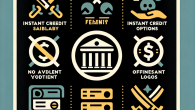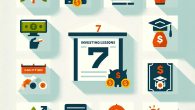
Women & Wealth: Building Confidence Alongside Capital
What Is Financial Independence — And How Can You Achieve It?
If you’ve ever dreamed of sipping your morning latte without wondering if you can afford avocado toast later, you’re not alone. The concept of financial independence (FI) has gone from finance-nerd obscurity to brunch-table chatter — and for good reason. Simply put, financial independence means having enough passive income and savings to cover your living expenses for the rest of your life.
But let’s cut through the noise: it’s not about being rich. It’s about freedom. Freedom from living paycheck to paycheck. Freedom from mind-numbing jobs. Freedom to choose work that fulfills you—or no work at all.
Hi there! I’m Rachel Simmons: spreadsheet sorceress, self-proclaimed financial therapist, and the sort of friend who tells you to max out your Roth IRA before buying that new iPhone. Let’s break down what financial independence really means and exactly how you can achieve it—without selling everything and moving to a van (unless that’s your thing).
What Does Financial Independence Really Mean?
At its core, financial independence means that your assets generate enough income to support your lifestyle indefinitely. That income could come from investments like stocks, real estate, or even a blog you started three years ago that mysteriously earns affiliate revenue while you sleep.
The Money Math of FI
The magic number varies by lifestyle, but a popular benchmark in the FI community is the 25x Rule. That means saving 25 times your annual expenses. If you need $40,000 per year to live comfortably, you’re aiming for $1,000,000 in investable assets. Why? Because of the 4% Rule. It suggests you can safely withdraw 4% of your portfolio each year without running out of money.
Example:
- Annual expenses: $40,000
- Target FI number: $1,000,000
- Annual withdrawal (4%): $40,000
Disclaimer: I’m not a magician. Inflation, market dips, and life can all play havoc with projections. But it’s a tried-and-true framework that works for most planning scenarios.
The 5 Levels of Financial Independence
Let’s get real: financial independence isn’t binary. It exists on a spectrum. And knowing where you stand can help you build a smarter strategy.
- Financial Stability: You’ve got an emergency fund, no bad debt, and you sleep okay without triple-checking your bank account.
- Financial Security: Your essential expenses (housing, food, bills) are covered by passive income.
- Financial Flexibility: You can take a lower-paying job or a sabbatical without panicking.
- Financial Independence: Work becomes optional. You’ve hit the money jackpot (no lottery ticket required).
- Financial Abundance: You’ve got more than enough to help others—or buy an espresso machine that costs more than your car.
How Can You Achieve Financial Independence?
Now for the juicy part: how do you actually make FI a reality? Good news: it’s more steak and broccoli than rocket science. The key ingredients are saving aggressively, investing intelligently, and living intentionally.
Step 1: Know Your Number
You can’t hit a goal you haven’t set. Calculate your current annual spending and apply the 25x Rule. Multiply that number by 25, and voilà! That’s your FI number.
Step 2: Increase Your Savings Rate
This is the golden lever. The more you save, the less you need—and the sooner you reach FI. Most Americans save less than 10% of their income. If you want to gain serious ground, aim for 30% to 50%.
Pro Tips:
- Automate your savings so you never see the money in your checking account.
- Slash major expenses—housing, transportation, and food take the biggest bites.
- Boost income through side gigs, freelancing, or career moves.
Step 3: Invest Wisely (Not Emotionally)
You can’t save your way to FI—you have to invest. Compound interest is your BFF here. Most FI journeys involve a diversified portfolio of index funds or ETFs with low fees. No GameStop memes. No crypto regrets. Just boring, beautiful growth over time.
Consider a balanced portfolio with:
- Stocks: For long-term growth
- Bonds: For stability
- REITs or rental property: Optional, if you love spreadsheets and tenants
Step 4: Avoid Lifestyle Inflation
Got that raise? Congrats! Now don’t immediately buy a new car or upgrade your Netflix plan to Ultra-Premium-Megastream. Instead, funnel the extra income toward savings or investment. FI is about maintaining a value-rich life, not a stuff-rich one.
Common Myths About Financial Independence
“You have to retire early.” Nope. FI is not about retiring and sitting on a beach forever (unless that’s your dream). Many people pursue what’s called “FI/RE” (Financial Independence / Retire Early), but most don’t actually stop working — they just work on their own terms.
“FI is only for people who earn a lot.” False. The basic math of FI works for any income level—it’s about the gap between what you earn and what you spend. The bigger the gap, the faster you grow your savings and investments.
“It’s too late for me.” Also false. Whether you’re 25 or 55, improving your financial health brings not just freedom but confidence. Remember, progress is power.
Final Thoughts: Financial Independence Is a Journey, Not a Destination
I’ll say it louder for the people in the back: FI isn’t about money—it’s about choice. It doesn’t require deprivation. It requires clarity, consistency, and a bit of courage. Whether you want to travel the world, start a nonprofit, or simply never stress about rent again, FI gives you the foundation.
And hey — if your path to financial independence takes a few detours (student loans, dream weddings, vet bills), that’s okay. What matters is that you’re on the path and committed to progress.
If you’re ready to take the next step, check out our About Us page to learn more about how Financeone can support your journey. Have questions? Don’t hesitate to get in touch with our team.
Here’s to freedom, flexibility, and a bank account that reflects your values — not your stress level.









Leave a Reply